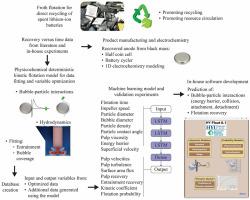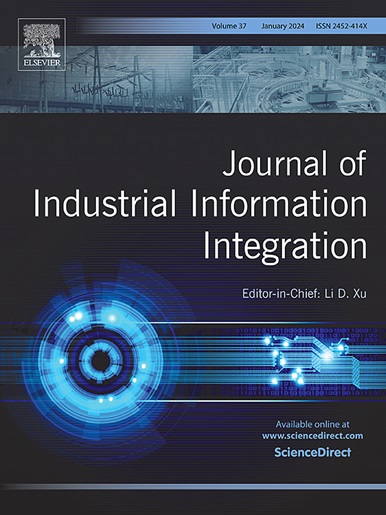利用物理化学动力学模拟和实验数据,通过长短期记忆网络预测锂离子电池电极的浮选分离情况
IF 10.4
1区 计算机科学
Q1 COMPUTER SCIENCE, INTERDISCIPLINARY APPLICATIONS
引用次数: 0
摘要
废旧锂离子电池中的正极和负极活性材料可以回收,并有可能用于新电池,以促进回收和资源循环。对原始活性材料和从预处理废电池中获得的黑色物质进行了浮选。利用计算流体动力学和表面化学模拟了浮选动力学。通过对实验数据进行系统拟合,选择并优化了浮选动力学模型中的气泡表面覆盖率和夹带率。夹带影响活性物质的回收率和品位。优化后的浮选动力学模型用于生成更多数据,这些数据与拟合数据一起用于训练深度学习神经网络。利用阳极-阴极和黑质浮选实验对训练后的网络进行了验证,其预测结果显示最大残余误差为 0.18 ± 0.11 回收率。模拟框架被开发成一个桌面应用程序,用于预测活性材料的浮选行为。它为估计操作和物理化学变化后的结果以及优化浮选工艺提供了信息。最后,从黑泥中回收的阳极活性材料被选中用于硬币池测试。这些硬币电池的库仑效率(86.8%)最初低于使用原始石墨颗粒制造的电池(98.4%)。本文章由计算机程序翻译,如有差异,请以英文原文为准。

Flotation separation of lithium–ion battery electrodes predicted by a long short-term memory network using data from physicochemical kinetic simulations and experiments
Anode and cathode active materials from spent lithium–ion batteries may be recovered and potentially used in new batteries to promote recycling and resource circulation. Froth flotation was applied to pristine active materials and the black mass obtained from pretreated spent batteries. Flotation kinetics was simulated with the use of computational fluid dynamics and surface chemistry. Bubble surface coverage and entrainment in the flotation kinetics model were selected and optimized by systematic fitting to experimental data. Entrainment influences the recovery and grade of the active materials. The optimized flotation kinetics model was used for generating additional data that, along with the fitted data, were used to train a deep learning neural network. The trained network was validated using anode–cathode and black mass flotation experiments, and its predictions showed a maximum residual error of 0.18 ± 0.11 recovery. The simulation framework was developed into a desktop application that predicts the flotation behavior of active materials. It provides information for estimating results following operational and physicochemical changes and for optimizing flotation processes. Finally, recovered anode active materials from black mass were selected for coin cell tests. The coulombic efficiency of these coin cells was initially lower (86.8 %) than that of cells made with pristine graphite particles (98.4 %).
求助全文
通过发布文献求助,成功后即可免费获取论文全文。
去求助
来源期刊

Journal of Industrial Information Integration
Decision Sciences-Information Systems and Management
CiteScore
22.30
自引率
13.40%
发文量
100
期刊介绍:
The Journal of Industrial Information Integration focuses on the industry's transition towards industrial integration and informatization, covering not only hardware and software but also information integration. It serves as a platform for promoting advances in industrial information integration, addressing challenges, issues, and solutions in an interdisciplinary forum for researchers, practitioners, and policy makers.
The Journal of Industrial Information Integration welcomes papers on foundational, technical, and practical aspects of industrial information integration, emphasizing the complex and cross-disciplinary topics that arise in industrial integration. Techniques from mathematical science, computer science, computer engineering, electrical and electronic engineering, manufacturing engineering, and engineering management are crucial in this context.
 求助内容:
求助内容: 应助结果提醒方式:
应助结果提醒方式:


